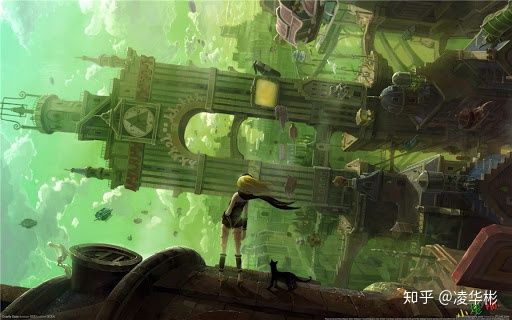Yesterday, we asked you on Twitter and Facebook what you think a new game engine should look like in 10 years. We asked you this question because the same question was asked to some of the biggest game engine creators in the world.
In a discussion on Zhihu about what to expect in the ten years with game engine technology brought developers from multiple engines together, including our very own technical director, Ling Huabin (aka Panda), to give their opinion on what’s coming next.
Game Engines Create New Worlds
The first to share their opinion was Dazhao, an Epic Games community manager, who shared a lengthy discussion about what the Unreal team is doing to help in the upcoming years. Dazhou discussed how the idea of the game engine is to bring about a new virtual world with every game that is created. This can mean much more in other aspects of our lives including adding the technology used in game engines towards many different new fields such as automotive, manufacturing, architecture and more.
Dazhou also talks about the work done within a game engine, making more things customizable, ending complicated structures like pipelines in programing and improving the way developers can use particle systems and customize the physics engine.

In the end, Dazhou believes with so much happening in the game industry, there will be a future for all game engines to grow in and hopes that each engine will find its path to usability in the development ecosystem among the rest of the competition.
Game Engines Are Growing With New Technology
BenzzZX, the co-founder and technical director at Duyou, one of the largest game streaming companies in China, shared his opinion stating that we still are exploring the complexities of what a game engine can do. From AR to VR, to deep learning, and cloud gaming. The only way we’ll know where a game engine is going is from the experiences that a game engine can provide and developers make.
Panda agrees with both as he feels that the ultimate goal of a game engine is to create a world that can be used to make immersive experiences that can revolutionize many things, not only games but other fields, as stated by Dazhou.
Game Engines Allow For Interactivity
Panda continues the discussion with what makes the game industry much more different than any other industry. “In addition to providing an immersive experience, the interactive needs of the player are likely to be higher than any other requirement, which makes games different from all other forms of entertainment,” says Panda.

“For example, a new form of film and television may give the user a fully immersive feeling, but the director’s intentions still dominate the narrative. So there’s too much control over the audience. A theater stage may be completely built with AR technology or holographic projection technology, making the boundaries between the set and the stage liberated. But the audience is still mainly passive to the story.”
“Virtual training in various industries (also called serious games), can be regarded as needing relatively strong interaction requirements, such as when they are training in virtual surgery, requires the real sense of interactive feedback. It is a deepening of the specific interactive experience that will be needed for the future of game engines.”
Panda continues by sharing some examples of how a player interacts with the world can create some incredible and different types of experiences than other forms of entertainment including examples of games that user can control the gravity (Gravity Rush), use of the controller with games like 1,2 Switch, and the use of HoloLens to play Minecraft. With AR and VR starting to grow, the questions of what other new logical inputs could be used to change the way people play. We’ve seen this with wearable devices that convert movements in your body, to head-mounted brainwave devices that use your thoughts to control the character.

Panda returns to the main question and responds, “My thinking is that the game engine will definitely adapt to technological changes and creative needs of the developer. From the perspective of interactive experience evolution, the development of input and feedback devices will directly affect the design of game engines. With the birth of the iPhone, it directly gave birth to a vast mobile game market for game engines such as Cocos and Unity with mobile-based touch interactions. This ushered in substantial growth opportunities for everyone. After the birth of commercial VR equipment, various 3D engines also began to adapt to the requirements of VR dual-screen display and new main viewing angle control methods. “
“AR devices allow game engines to begin to adapt to the environment recognition capabilities, object recognition capabilities, and gesture recognition capabilities. Even the creators of the rumbling controller, Nintendo, requires game engines to adapt to its JoyCon, a unique controller that gave birth to a unique game that uses fitness as the gameplay in Ring Fit Adventure. Many people think that AR and VR are too gimmicky and have no substantial value. That is because these technologies have not evolved into their proper form. Today's AR and VR devices are like Windows Mobile games were before the iPhone. Sooner or later, the iPhone of this technology will appear and it will be a revolutionary product.”

In the end, Panda shares a bit of the great work that is going on with Cocos for the future and how we are developing for what we feel the developers of tomorrow’s need for today. We have a lot of great new technology that is coming out soon and we will be sharing with the world in the coming months.
From a future perspective, we will always continue to improve the functionality of the engine, improve the performance of the engine, and make the game engine easier to use as best we can. The engine’s basic capacity will enhance its value in the existing market. But we will also put a lot of effort to expand the boundary of the game industry, just like Wii did to bring all those casual gamers or users who have never played game once to hold Wii remote and enjoy gaming time with family and friends.
Questions For Tomorrow’s Game Engine
Panda ends his post with a few questions that everyone in the industry should answer if we are to improve the immersion of the games and how the new era of game engines will solve the problems of the present:
- What will be the hardware for playing your game: How will revolutionary AR/VR equipment looks like? Better and more kinds of wearable devices for games?
- Changes in how people interact with the outer world: Will we still be using phones to interact with each other? Will the starting point be to acquire data from voice and hand gestures? How will an AR browser looks like?
- Device interaction requirements: Will we have more lightweight but performance limited devices like watches or glasses which connects to a powerful endpoint? Our phone or directly the cloud? How can a game engine transform all kinds of inputs into the visual and other feedbacks to the player?
- Improving networking speed: We are entering the 5G era, making network speed faster than we ever imagined. Will high-speed networks help improve the gaming experience be much more customizable depending on location, environment and other inputs?








